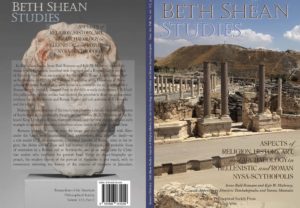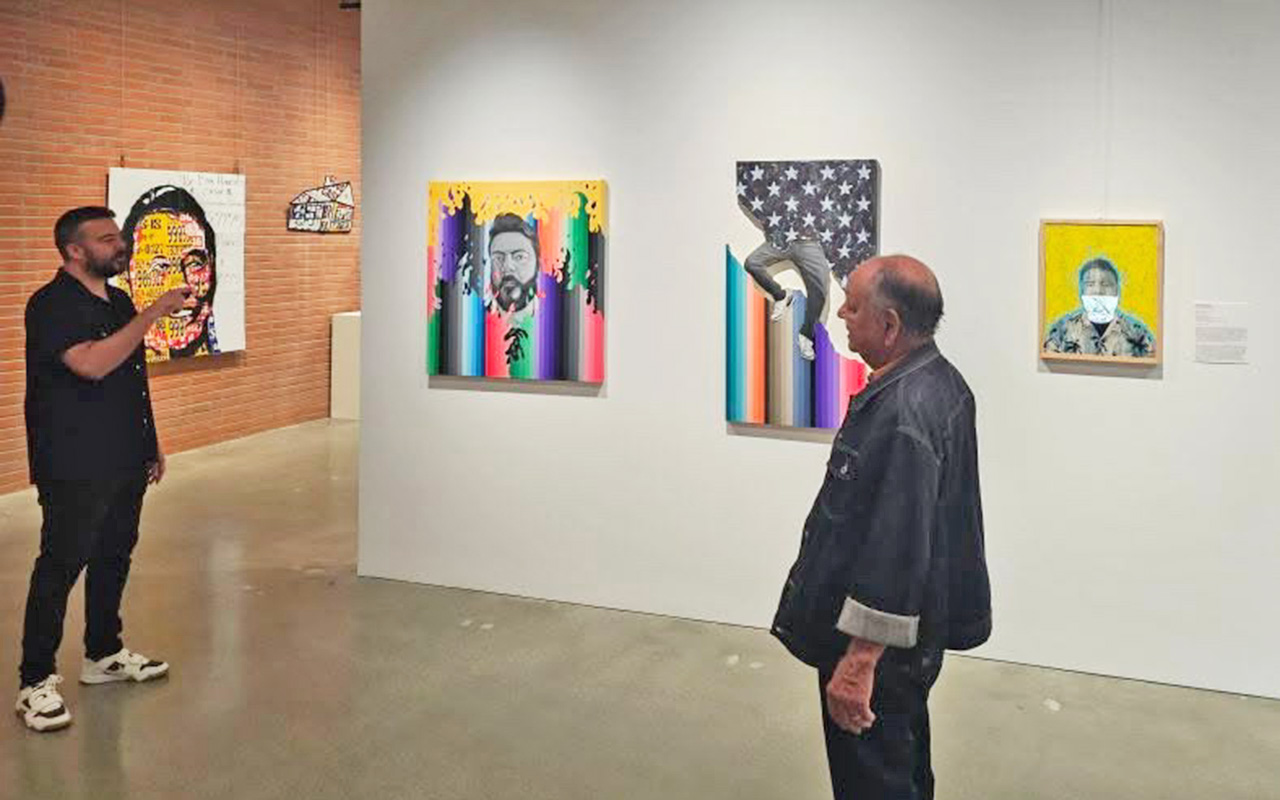
Prof. Romano probes marble portrait of Alexander in new book
By Michael Chesnick. April 11, 2024Alexander the Great has been popular for over 2,300 years, but University of Arizona Art History Professor Irene Bald Romano explains how the image and myths surrounding one of history’s greatest military generals have been manipulated and appropriated in her new book.

In “Beth Shean Studies: Aspects of Religion, History, Art, and Archaeology in Hellenistic and Roman Nysa-Scythopolis,” Romano and co-author Kyle W. Mahoney probe two artifacts excavated in 1925 in Beth Shean, Israel — a Roman marble portrait of Alexander the Great and a Hellenistic-inscribed stele fragment — by the Palestine Expedition of the University of Pennsylvania Museum.
The book includes an appendix by two scientists in Athens who conducted the analysis of the marble of Alexander’s head and identified the quarry. The American Philosophical Society in Philadelphia supported Romano’s research with grants and agreed to publish the book in a series which has been continuously published since 1771 — the oldest publication in America — and now distributed by Penn Press.
The University of Arizona School of Art recently interviewed Romano, who uses an object-biography approach in the book to trace the modern history of the portrait of Alexander, showing how its movements mirror the history of the creation of museums in Jerusalem.
Q. What drew you to do research on the marble head of Alexander the Great?
A. I began my interest in the sculpture from the site of Beth Shean in Israel in the early 2000s when I was writing a book on all of the Classical sculpture in the University of Pennsylvania Museum of Archaeology and Anthropology in Philadelphia. Included among the Penn Museum’s collection are colossal marble finger fragments that were found in the same place and at the same time as a marble portrait of Alexander the Great — in a cistern on top of the tel of Beth Shean, or ancient Nysa-Scythopolis. The fingers don’t belong to the Alexander statue, but they got me interested in what other sculpture fragments were found in the same context. I was able to go to Israel in the summer of 2016 to study the marble portrait of Alexander the Great, with the help of a grant from the Albright Institute for Archaeological Research in Jerusalem and the welcome support of the Israel Museum, Jerusalem where the Alexander head is located. More recently, I invited my colleague Kyle to write a chapter in the book on a Greek inscription that was found in the same cistern and that tells part of the earlier history of the site, in the 2nd century B.C.
Q. A Netflix docuseries, “Alexander: The Making of a God,” came out this year. Why are we so obsessed with Alexander the Great?
A. I have not seen the series. But as I write in the book: “Alexander the Great — the man, the myth, the hero, the conqueror, the ruler-turned-god, his accomplishments, and his images in various media — has held an enduring fascination since his death in 323 BCE. Alexander has been the subject of a myriad of ancient biographies; literary and artistic depictions of his legendary exploits in various languages and formats, including in stories of ‘The Alexander Romance,’ his transformation as Iskander in Persian miniature paintings, and as a Byzantine emperor in 14th century miniatures; in popular modern literature; and in a challenging mountain of modern scholarship. He has inspired a series of prints by Andy Warhol and a recent comparison with 21st century male hairstyles, and he has been used as a political pawn in the high-stakes politics of national identity in the Balkans.”

Q. How does your research help better understand the image and myths associated with Alexander?
A. In the vast scholarship devoted to Alexander the Great, it would seem there is little more to be said about him, yet this Roman marble portrait from Scythopolis has barely been considered as a part of the tapestry of Alexander’s historical legacy. The details about this portrait are fully published in this book for the first time and provide key information about an important ancient site — its monument landscape and cultic associations in the Roman period — and about Alexander as a mythical founder of Near Eastern cities and a role model for emperors in a vital period of Roman history. A reconstruction of the life, deeds, and physical appearance of Alexander of Great is hampered by the fact that his historical biographies were all written long after his death, with the oldest surviving account that of Diodorus (Bibliotheke 17), written 300 years after his death, and the most reliable account by Arrian (Anabasis) written during the second century CE, 500 years after Alexander’s lifetime. A kind of “romantic tapestry” about him was created, and mythologies of his life and deeds were embellished over the centuries.
Alexander became so popular in the Roman period in the East, especially in the second and third centuries CE, that cities of the Decapolis — in modern Israel, Jordan and Syria, including Scythopolis, or ancient Beth Shean, who prided themselves on their Greek heritage — could not resist claiming him as their founder. Various cities in other parts of the Roman Empire established ruler cults to the youthful hero-turned-god. At Beth Shean, it seems Alexander may have been worshipped alongside the main deity, Zeus, in the Roman temple on its acropolis, or the tel where this statue of which we only have the head) was set up.
The mythical life and deeds of Alexander were projected on the life of Jesus in early Christian theology, yet in the Late Roman/Early Byzantine period Alexander was regarded an anti-Christ who threatened Christian monotheistic beliefs. Thus, in the early Christian period in Scythopolis, his statue was mutilated and decapitated, and the demons that lived within the image of Alexander were exorcized. Though his memory lived on elsewhere in the Late Antique period, at Scythopolis Alexander was laid to rest in a watery cistern, to be brought back to “life” again with the discovery of this head in 1925 during the British Mandate. It was put on display in 20th century Palestine and eventually displayed in the IMJ as an ancient model in the modern state of Israel.
Q. Could you elaborate on your object-biography approach in the study of the portrait of Alexander the Great?
A. It’s a methodology that arose from the field of anthropology and entails an examination of a work of art or cultural object in all aspects of its life cycle — its manufacturing technique, time and place, and its uses and interpretations throughout its history in changing sociocultural-political contexts, as well as in modern museum settings. Other art historians have used this approach to study “the lives and afterlives” of ancient sculpture but their interests have focused primarily on the use and history of specific works in their ancient past, for the most part neglecting their modern history, contemporary questions, and contexts. Presenting the full biography of ancient objects when it is possible to reconstruct the complete information, as is the case with this Alexander head, opens up interesting questions about uses, appropriation, and reception of works of art across the span of their “lives,” both in their ancient and post-ancient contexts.
So, in this book I discuss the entire “life” of this marble portrait of Alexander, from its manufacture and use, its discovery in 1925, and its modern history, including its transfers from the site of Beth Shean to the Palestine Museum of Antiquities in East Jerusalem, to the Palestine Archaeological Museum which became the Rockefeller Archaeological Museum, then to the Israel Museum, Jerusalem, inaugurated in 1965, where the portrait head is today.







